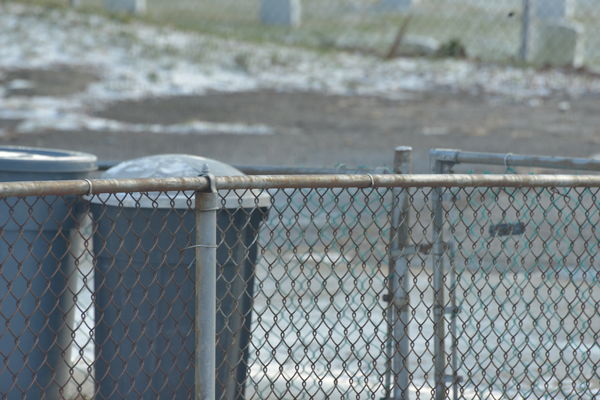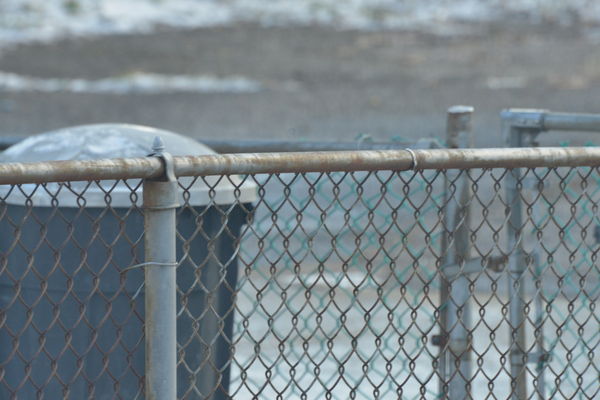DX "Reach" versus magnification
Feb 2, 2013 02:19:56 #
Can anyone please explain in simple terms the difference between the DX "reach" (compared to FX) versus image magnification?
I'm guessing the increased reach of the DX crop sensor on any given focal length lens is not really the same as increasing magnification, or is it in regards to the end result of an image?
Thanks in advance,
Jeffrey
I'm guessing the increased reach of the DX crop sensor on any given focal length lens is not really the same as increasing magnification, or is it in regards to the end result of an image?
Thanks in advance,
Jeffrey
Feb 2, 2013 02:27:04 #
Finch585 wrote:
Can anyone please explain in simple terms the difference between the DX "reach" (compared to FX) versus image magnification?
I'm guessing the increased reach of the DX crop sensor on any given focal length lens is not really the same as increasing magnification, or is it in regards to the end result of an image?
Thanks in advance,
Jeffrey
I'm guessing the increased reach of the DX crop sensor on any given focal length lens is not really the same as increasing magnification, or is it in regards to the end result of an image?
Thanks in advance,
Jeffrey
There's an interesting discussion on another site that you may find helpful:
http://admiringlight.com/blog/full-frame-equivalence-and-why-it-doesnt-matter/
Feb 2, 2013 02:27:15 #
Cut a 12 inch hole out of a piece of paper and look through it. (Full Frame)
Now cut a hole 8 inch (1.5 times smaller) and look through it. (Crop Sensor)
Where you see the 'full' image through the first, you see a 'cropped' version in the second.
Now cut a hole 8 inch (1.5 times smaller) and look through it. (Crop Sensor)
Where you see the 'full' image through the first, you see a 'cropped' version in the second.
Feb 2, 2013 03:01:39 #
St3v3M wrote:
Cut a 12 inch hole out of a piece of paper and look through it. (Full Frame)
Now cut a hole 8 inch (1.5 times smaller) and look through it. (Crop Sensor)
Where you see the 'full' image through the first, you see a 'cropped' version in the second.
Now cut a hole 8 inch (1.5 times smaller) and look through it. (Crop Sensor)
Where you see the 'full' image through the first, you see a 'cropped' version in the second.
Good practical illustration.
As I understand it magnification is a product of the lens focal length, while reach is the result of the interaction of the lens field of view and the size of the sensor. When we look through the viewfinder of a "cropped" sensor camera, what we see is the center portion of what would be the image on the larger "full frame" sensor. It appears to us that the lens is magnifying the image, but it is not.
The magnification illusion is then compounded by printing the resulting images at the same traditional paper sizes. If we printed the image from the crop sensor smaller, scaled down by the same difference that the crop sensor is smaller than a FF sensor, and then compared that to an image taken with a FF sensor, objects would be the same size.
Feb 2, 2013 04:52:45 #
Photographer Jim wrote:
quote=St3v3M Cut a 12 inch hole out of a piece of... (show quote)
What you just said really sealed the deal and made this understandable....very good.
Feb 2, 2013 10:10:08 #
This is about FX and DX where FX is full frame and DX is smaller than full frame, giving full frame lenses a "magnification factor through cropping in of 1.5x. This means a full frame 50mm will give the look of a 75mm on a DX camera.
The fun fact: this psuedo 75mm will be sharper with better image characteristics than a 75mm lens designed for the DX format. Why? It is about image circles. Every lens has an "Image Circle" which is designed to cover the given image format (sensor or film.) Lens performance, in general, always deteriorates towards the edges. You can see this, for example, when dark vignetting occurs with certain lenses, usually when shooting wide open.
When you put a FX lens on a DX camera, you are using a famous trick - that is, shooting at the part of the image circle where the lens delivers its best quality. Vignetting disappears, sharpness increases, distortions are fewer.
So, hurray!
The fun fact: this psuedo 75mm will be sharper with better image characteristics than a 75mm lens designed for the DX format. Why? It is about image circles. Every lens has an "Image Circle" which is designed to cover the given image format (sensor or film.) Lens performance, in general, always deteriorates towards the edges. You can see this, for example, when dark vignetting occurs with certain lenses, usually when shooting wide open.
When you put a FX lens on a DX camera, you are using a famous trick - that is, shooting at the part of the image circle where the lens delivers its best quality. Vignetting disappears, sharpness increases, distortions are fewer.
So, hurray!
Feb 2, 2013 11:01:44 #
Well done all and thanks for , a good explanation of FF vs DX. In my humble opinion it won't be long before most if not all DSLRs will be FF. if for no other reason than to get people who have DX lenses to eventually "want" or need to buy all new lenses. I see such an issue as a marketing issue, not as a technology one
Feb 2, 2013 11:03:35 #
charles brown wrote:
I see such an issue as a marketing issue, not as a technology one
It actually isn't.
I bought a FF camera because of the tech advantages; better low light performance, much better image quality (details).
See the "Full frame advantage" article on his site and notice the amount of detail that is lost in a crop shot...I was floored when I saw the comparison pics.
Feb 2, 2013 11:40:37 #
Wabbit
Loc: Arizona Desert
Finch585 wrote:
Can anyone please explain in simple terms the difference between the DX "reach" (compared to FX) versus image magnification?
I'm guessing the increased reach of the DX crop sensor on any given focal length lens is not really the same as increasing magnification, or is it in regards to the end result of an image?
Thanks in advance,
Jeffrey
I'm guessing the increased reach of the DX crop sensor on any given focal length lens is not really the same as increasing magnification, or is it in regards to the end result of an image?
Thanks in advance,
Jeffrey
Hey Doc ..... the distance doesn't change, your field of view does so you have the illusion of a higher magnification .....
..... so for practical purposes you could say that a 50mm on a Nikon DX (crop Sensor) camera gives you the power of a 75mm lens .....
Feb 2, 2013 13:38:03 #
PhotoArtsLA wrote:
This is about FX and DX where FX is full frame and... (show quote)
Good points.
I think the Fun Fact also helps explain why "cropped sensor" cameras are often favored by photographers whose primary interest is in shooting nature, especially wildlife, and sports. Slap an FX lens on a good crop body to take advantage of that "sweet spot", combine it with the usually faster burst rate in continuos shooting, and you've got a combo that a "birder" just loves. I think this also helps explains why manufacturers tend to concentrate their efforts in developing DX lens on the wide angle ranges rather than "long" lens ranges.
Honestly, I wish I had understood all of this much better than I did when I made my move to a FF sensor. It did turn out to be a good move, in that I shoot with wide angle lens (often in lower light) a good majority of the time. But as I've learned more over time, I'm now convinced that selling off my FF backup body and replacing it with a cropped sensor body would be to my advantage, solely so that I can take advantage of the "reach" of my telephoto lens on the few occasions when I do want to shoot really long.
Feb 3, 2013 03:13:51 #
OP here: with all that said, I must ask, in spite of the "sweet spot" benefit of the crop sensor mentioned, wouldn't an image of a distant subject enlarged using true magnification power create a better image than the illusion of the same image created by just a crop sensor's reach ? If so, is it because the resolution would be better and/or less noise would result by true magnification than the blow up effect of the reach?
I should state that one of the reasons I posed the original "reach vs. magnification" question is that my FF Envy Syndrome has returned because I bought a couple of used primes for my D7000, (20mm f/2.8 and 85mm f/1.8D), and I'm not fully satisfied with the image results.
The 20mm manifests as a 30mm FOV (as I knew it would) and is not wide enough for me and the 85m is like 127mm, and so, while the bokeh and blur is great, the composition is often too tight.
Therefore, I have started watching ebay to see how fast the price drops on D700's as hopefully more and more owners sell them to flock to the D800 and create a supply/demand imbalance so that I can afford one.
Jeffrey
I should state that one of the reasons I posed the original "reach vs. magnification" question is that my FF Envy Syndrome has returned because I bought a couple of used primes for my D7000, (20mm f/2.8 and 85mm f/1.8D), and I'm not fully satisfied with the image results.
The 20mm manifests as a 30mm FOV (as I knew it would) and is not wide enough for me and the 85m is like 127mm, and so, while the bokeh and blur is great, the composition is often too tight.
Therefore, I have started watching ebay to see how fast the price drops on D700's as hopefully more and more owners sell them to flock to the D800 and create a supply/demand imbalance so that I can afford one.
Jeffrey
Feb 3, 2013 05:49:54 #
Isn't that assuming you are using the same lens on the crop sensor camera as on the full frame camera? If you use a lens made for a crop sensor camera on the crop sensor camera and use a lens made for a full frame camera on the full frame camera and if both lenses have the same focal length the results should be the same for testing.
Photographer Jim wrote:
quote=St3v3M Cut a 12 inch hole out of a piece of... (show quote)
Feb 3, 2013 07:53:43 #
Wabbit
Loc: Arizona Desert
Finch585 wrote:
OP here: with all that said, I must ask, in spite... (show quote)
Hey Doc ..... I don't think you get it yet ..... why don't you post the photos you're unhappy with so we can see what you're doing .....
Feb 3, 2013 08:03:07 #
Whatever - fact is I used my Nikon 70-300 AF-S on my D800 in FX mode shooting an image about 30 feet away and then switched to the DX (1.5) mode and shot the same image, same focal poit for both. Result:
FX had a wider field of view all around; DX had a larger image in the smaller field of view.
What I can't resolve is if there is NO magnification why does the image not appear as the same size in both modes albeit with the DX having a smaller field of view. My eyes tell me the DX magnifies.
The focal point for both the the bottom of the cap on the vertical pole bisecting the can that holds the horizontal bar.
FX had a wider field of view all around; DX had a larger image in the smaller field of view.
What I can't resolve is if there is NO magnification why does the image not appear as the same size in both modes albeit with the DX having a smaller field of view. My eyes tell me the DX magnifies.
The focal point for both the the bottom of the cap on the vertical pole bisecting the can that holds the horizontal bar.
FX mode

DX mode

Feb 3, 2013 08:15:35 #
Finch585 wrote:
Can anyone please explain in simple terms the difference between the DX "reach" (compared to FX) versus image magnification?
I'm guessing the increased reach of the DX crop sensor on any given focal length lens is not really the same as increasing magnification, or is it in regards to the end result of an image?
Thanks in advance,
Jeffrey
I'm guessing the increased reach of the DX crop sensor on any given focal length lens is not really the same as increasing magnification, or is it in regards to the end result of an image?
Thanks in advance,
Jeffrey
This might help.

If you want to reply, then register here. Registration is free and your account is created instantly, so you can post right away.







